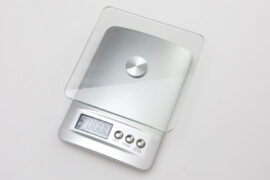Whip Up a Delight: Easy Steam Pudding Recipe for Busy Parents
Welcome to the world of deliciously easy desserts, busy moms and dads! If you’re juggling the hectic life of parenting and craving for a warm, comforting dessert that won’t have you slaving away in the kitchen, you’ve landed on the perfect page. Today, we are excited to share with you an Easy Steam Pudding Recipe that’s not only a cinch to make but also quite the showstopper at any family dinner. So, let’s channel your inner dessert-chef and dive into the simplicity and joy of steamed puddings.
What is Steam Pudding?
Before we begin, let’s unpack what steam pudding is. A classic steam pudding is a traditional British dessert that dates back to the Victorian era. It’s a moist, cake-like treat cooked through steaming, which gives it a uniquely soft texture. This method of cooking ensures that all the delightful flavors are sealed in, making each bite an absolute pleasure. And the best part? It’s one of the most forgiving desserts around – perfect for those of us who may not be professional bakers!
Why Parents Will Love This Recipe
We know time is of the essence when you have little ones running around, which is why this steam pudding recipe is a gem. Here’s why it’ll become a family favorite:
- Minimal prep time: This recipe requires simple ingredients and very little preparation.
- No fancy equipment needed: You don’t need a special pudding basin. A simple mixing bowl and a pot for steaming will do.
- Freezer-friendly: Make it ahead of time and just reheat when you’re ready to serve.
- Customizable: Easily swap out ingredients to cater to your family’s preferences or dietary needs.
Gather Your Ingredients
Let’s start by gathering our ingredients. For this basic steamed pudding, you’ll need the following:
- 1 cup of self-raising flour
- ½ cup of fine sugar
- ½ cup of butter, softened
- 2 large eggs
- 2 tablespoons of milk
- 1 teaspoon of vanilla extract
- A pinch of salt
- Your choice of fruit (like sultanas or chopped apples) or jam for added flavor (optional)
Step by Step: Easy Steam Pudding
Here’s a step-by-step guide to making your steam pudding:
Step 1: Prep Your Steaming Setup
Firstly, you’ll need to get your steaming setup ready. Fill a large pot with about two inches of water and bring it to a simmer. Make sure there’s a steam rack inside the pot upon which you can place your mixing bowl or pudding basin later.
Step 2: Cream Butter and Sugar
While the water is heating up, take a large mixing bowl and cream together the softened butter and sugar until the mixture is pale and fluffy. This is a crucial step to incorporate air into your batter, resulting in a light and spongy pudding.
Step 3: Add Eggs and Vanilla
Beat in the eggs, one at a time, adding a little flour with the second egg to prevent curdling. Stir in the vanilla extract for that warm, aromatic flavor.
Step 4: Fold in the Flour
Gently fold in the self-raising flour and a pinch of salt. If the mixture is too thick, loosen it with the milk until you have a smooth, dropping consistency.
Step 5: Flavor It Up!
If you’re using fruit or jam, now’s the time to stir it in. Remember, this step is entirely optional, but it adds a lovely twist to the traditional steam pudding.
That’s the starting point of our easy steam pudding – simple, right? Stay tuned as we will continue to guide you through the cooking process and share helpful tips on how to serve this delightful dessert. Trust us, your whole family will be thrilled with the sweet and steamy result. And remember, the joy of cooking is all about the love you put into it, so let’s keep whisking up some happiness!

5 Things Parents Should Know in Preparing Easy Steam Pudding
Before we plunge into the final steps of creating our steam pudding, here are five essential tips that will ensure your dessert is a smooth and successful endeavor.
Tip 1: The Right Pot and Steamer Set Up
Ensure that the pot you choose fits your bowl or pudding basin comfortably, with enough space around it to allow steam to circulate. If you don’t have a traditional steamer, no problem! An ordinary metal colander or a heat-proof plate can work wonders when placed inside the pot over water. The key is to create an environment for gentle and even steaming.
Tip 2: Checking Consistency
The consistency of your batter can make or break your pudding. Aim for a ‘dropping’ consistency where the batter falls off the spoon easily when tapped against the side of the bowl. If it’s too thick, add a little bit more milk. If it’s too runny, a sprinkle more flour can help balance it out.
Tip 3: Covering Your Pudding
To avoid water from dripping into your batter, which can occur with condensation, cover the top of your pudding basin with a layer of greaseproof paper and secure it with an elastic band or string. You can also make a pleat in the center of the paper to give the cake some room to expand as it cooks. Over this, place a layer of foil for extra protection.
Tip 4: Patience is Key
Steam pudding isn’t something you rush. Set aside enough time for it to cook thoroughly – usually between 1 to 2 hours depending on the size of your pudding. The results are well worth the wait, giving you a perfectly moist and evenly cooked dessert.
Tip 5: Customization and Allergies
Adapting the basic recipe to cater to dietary preferences or allergies is quite straightforward. For those with gluten intolerance, replace self-raising flour with a gluten-free alternative. You can also use plant-based milk and butter to make it dairy-free. As for the sugar, honey or maple syrup can be healthier substitutes, although they might alter the texture slightly.
Continuing with Our Step by Step Guide
Step 6: Grease Your Basin
To make sure your pudding doesn’t stick, grease the inside of your mixing bowl or pudding basin with butter. After adding the batter, pat the bottom to remove any air pockets, and smooth the surface with the back of a spoon.
Step 7: Steam Your Pudding
Once the batter is ready and the steaming setup prepped, carefully place your pudding into the pot on the rack or colander. Cover the pot with a lid – this will keep the steam trapped inside and create a warm cocoon for your pudding. Check on the water level every so often to make sure it hasn’t boiled away, topping it up with more hot water as necessary.
Step 8: Test for Doneness
After around 1.5 hours, check if your pudding is done. The top should be firm to the touch, and a skewer inserted into the middle should come out clean. If it’s not quite there, don’t be afraid to give it a little more time.
Step 9: Let it Rest and Unveil
Once cooked, remove the pudding from the pot and let it sit for about five minutes. This resting period allows it to firm up a bit more and makes it easier to turn out onto a plate. Gently loosen the edges with a knife and invert it onto your chosen dish.
Serving Suggestions
Your gloriously warm steam pudding is now ready to serve! Pair it with a dollop of custard, a scoop of ice cream, or a drizzle of syrup for an even more indulgent treat. It’s a versatile dessert that’s wonderfully comforting on a chilly day but equally delightful any time you need a bit of sweetness to brighten your family’s dinner table.
Remember, busy parents, this steam pudding recipe is not only easy to prepare but also a fun family activity. Involve the kiddos in mixing and measuring, and they’ll be over the moon to enjoy the fruits of their labor. The memories made in the kitchen are just as sweet as this steamy wonder, promising smiles and satisfied tummies all around.
See more great Things to Do with Kids in New Zealand here. For more information see here
Disclaimer
The articles available via our website provide general information only and we strongly urge readers to exercise caution and conduct their own thorough research and fact-checking. The information presented should not be taken as absolute truth, and, to the maximum extent permitted by law, we will not be held liable for any inaccuracies or errors in the content. It is essential for individuals to independently verify and validate the information before making any decisions or taking any actions based on the articles.




